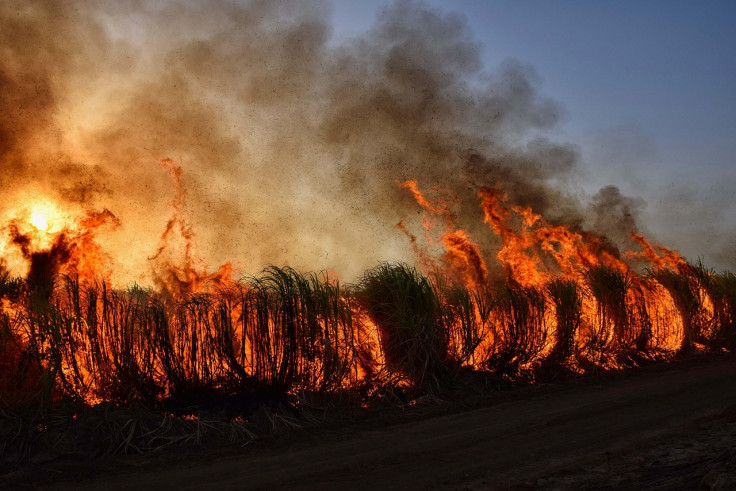Southern France Wildfires: Map Shows Area the Size of Paris Burned Down
One woman died after refusing to evacuate; one critically injured, and 13 others hurt, including firefighters

A ferocious wildfire has swept through the Aude region of southern France, burning up to 16,000 hectares in less than 24 hours.
The blaze, covering an area roughly the size of Paris, has forced mass evacuations, killed one person and prompted one of the country's largest firefighting operations in decades. Officials warn it remains active and could continue for days.
Scale and Location
The fire began on Tuesday afternoon near the village of La Ribaute in the Corbières hills of the Aude department, which lies between Carcassonne and the Mediterranean coast. By Wednesday, it had consumed between 13,000 and 16,000 hectares (32,000–39,500 acres), a greater area than France typically sees burn in an entire year, according to France 24.
Environment Minister Agnès Pannier‑Runacher said on X, formerly Twitter, that the destruction already exceeds the total burned in both 2023 and 2024, describing the scale as unprecedented in recent French history.
Human Toll and Firefighting Effort
One woman in her 60s died when her home collapsed after she reportedly refused to evacuate. Another person remains in critical condition and 13 others, including several firefighters, were injured, according to the BBC. Around 25 homes have been damaged or destroyed in villages such as Jonquières and Saint‑Laurent‑de‑la‑Cabrerisse.
Nearly 2,100 firefighters have been deployed, supported by water‑bombing aircraft and military personnel, Reuters reported. Power cuts have affected around 2,500 households, and key roads, including the A9 motorway, have been closed.
Prime Minister François Bayrou has mobilised national resources to assist the region and urged residents to remain vigilant.

Conditions Fueling the Blaze
Local officials attribute the fire's rapid spread to a combination of extreme heat, prolonged drought and strong winds, according to The Guardian. They note that the removal of traditional vineyards, which once acted as natural firebreaks, has increased the risk. Low rainfall over recent months has left vegetation tinder‑dry.
Climate scientists say such conditions are becoming increasingly common across southern Europe, with hotter summers and longer dry spells creating an environment where wildfires can ignite and spread rapidly.
Impact on Communities
In Jonquières, locals estimate that up to 80 per cent of buildings have been destroyed. Residents describe the blackened landscape as 'lunar' and fear for the survival of the local economy, which relies heavily on summer tourism, The Local France reported. Campgrounds, rural guesthouses and vineyard estates have been damaged, cutting into peak‑season income.
The loss of forest cover will increase soil erosion and reduce biodiversity. Burnt woodland will release large amounts of carbon into the atmosphere. Experts say reforestation will take years, with some native species potentially unable to return.
Lessons for the Future
The fire's scale, achieved in less than a day, highlights the speed at which climate‑driven disasters can unfold. It also mirrors a trend seen in other parts of Europe, where large‑scale wildfires are now an annual threat. While the UK does not face fires of this magnitude, it has recorded an increase in grassland and heathland blazes in recent summers, most notably during the record‑breaking heatwave of 2022.
Officials in southern France say the immediate priority is containment. But as residents return to survey the damage, the longer‑term challenge will be adapting land use, infrastructure and firefighting strategies to a hotter, drier climate.
© Copyright IBTimes 2025. All rights reserved.





















